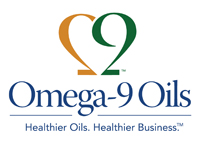For most baking and snack applications, fats or oils are an essential component. However we know that some fats are better than others. But snack producers and bakers have to balance multiple challenges, including functionality, health benefits, taste profile, sustainability and economics, to name a few.
Consumers’ perceptions of fats have changed, but so have some regulations surrounding fats—and the ingredients available are also continually updated. All this means a bit of a juggling act, which can seem a little overwhelming.
Luckily fat and oil processors and farmers have ample resources to help keep all the balls in the air.
Chewing the fat with consumers
Consumers have increasingly demanded higher standards for all their foods, not just fats and oils. “It’s all about transparency,” says Brian Anderson, vice president, innovation and marketing, Bunge North America, St. Louis. “Consumers are reading what’s on the label.”
Esther Meima, North American sales, Daabon Organic, Denver, notes: “Consumers, and millennials in particular, are interested more about what ingredients are being used in their food, where the ingredients come from and what possible health and environmental implications they have. Consumers want to know the story behind their food. We can directly trace our oil all the way back to the farm. This helps ensure that companies are purchasing sustainable and ethically produced products.”
Chris Abrams, product director, Dalsorb, The Dallas Group of America Inc., Whitehouse, NJ, emphasizes consumer interest in sustainability. “Our research shows over 70 percent of consumers are interested in food products that are delivered to them sustainably,” he says. The company offers products that reduce or eliminate oil discard. Abrams also notes that his company has a sustainability calculator that determines the impact eliminating oil discard has on a customer’s carbon footprint.

What’s in a name?
How fats and oils read on the label can make a difference. Recent surveys indicate consumers are reading nutrition labels, and the information is influencing their purchase behavior. In a 2015 survey conducted by the International Food Information Council (IFIC), a significant portion of consumers reported that they consider the fat content and fat type before making a purchase decision. The top three Nutrition Facts consumers considered were Total Fat (58 percent), Trans Fat (58 percent) and Saturated Fat (57 percent). Additionally, when asked how helpful it is to have certain nutritional information when making a food or beverage purchase decision, Total Fat, Saturated Fat and Trans Fat all received 60 percent or more of respondents rating this information as being “very helpful.”
Some fats are friendly fats. With the increase in awareness of and positive press about the Mediterranean diet, consumers now understand that some fats are healthier than others, and fats from certain sources contain beneficial fats. The main source of fat in the Mediterranean diet is olive oil, which contains a high percentage of omega-9 fatty acids, a monounsaturated fat. In the abovementioned IFIC survey, 68 percent of consumers rated omega-3 fats as healthful, and 47 percent identified omega-9s as healthful.
“Think of what’s happening with nuts, avocados, coconuts and chia seeds,” says Anderson, all of which are showing increased consumption. “Consumers clearly don’t perceive fats to be bad in a way that they did a decade ago.” Consumption figures prove the point. From 2000 to 2013, tree nut consumption increased from 2.60 pounds per person to 4.08 pounds per person, per the USDA Economic Research Service.
Tackling public enemy No. 1
The current public enemy No. 1 in food is partially hydrogenated oils (PHOs). This past June, FDA announced that manufacturers need to phase PHOs out of the processed food supply. They set a compliance period of three years to allow companies to reformulate their products and remove PHOs. PHOs are the main source of industrially produced dietary trans fat, which has a direct link to heart disease. Because research findings indicate that trans fat has such a negative effect on heart health, FDA made a tentative ruling in 2013 that PHOs should no longer be considered as GRAS (generally recognized as safe). This year’s ruling officially sets a deadline for PHO removal.
The need to reformulate to remove PHOs in snacks and baked goods has catalyzed product innovation from oil processors and plant breeders. Selective plant breeding has led to oils with high oleic content and lower saturated fat content. According to Mary La Guardia, omega-9 oils market manager, Dow AgroSciences, Indianapolis: “Traditional soybean oil has a saturated fat content of 12 percent, but a high-oleic soybean oil can have a reduced saturated fat level as low as 7 percent. Similarly, commodity canola oil has an oleic acid content of 61 percent, but an omega-9 canola oil can achieve an oleic acid content of 74 percent. Additionally, we can now minimize the effects of weather and climate on the quality of oil being produced, so the oleic content of our oils remains fairly constant from year to year.”
The challenge for formulators is that, for many snack and bakery applications, PHOs provided necessary functionality at an economic cost. John Sandbakken, executive director, National Sunflower Association, Mandan, ND, explains why use of sunflower oil has increased. “Many food manufacturers have moved to fats that come from vegetable oil, and some are using blends of different fats and oils, including sunflower oil, as a substitute for PHO products,” he says. “For the snack category, many companies have switched to sunflower oil, since it gives longer shelf life and has a light, neutral taste.”
Sunflower growers are also going after the high-oleic market. Sandbakken reports that in 2015, about 25 to 30 percent of the sunflowers grown would be refined into high-oleic sunflower oil. Because farmers and processors believe that the demand for high-oleic sunflower oil will continue to increase, by 2016, the acreage is expected to grow to 40 to 45 percent. “High-oleic sunflower oil offers snack food and bakery manufacturers the benefits of longer fry life and longer shelf life.”
LaGuardia points to some recent work with Weaver Popcorn Co: “Many microwave popcorn brands are exploring new ways of eliminating trans and saturated fats and replacing them with naturally stable fats, such as omega-9 canola oil. PopWeaver Light Butter popcorn switched to omega-9 canola oil and significantly reduced the saturated fat compared to other leading brands.”

Manufacturers have also had success with panko breadcrumbs. “We can take our gluten-free panko breadcrumbs and finish the product with a high-oleic canola oil to give a superior sensory experience,” says Anderson. “Our high-oleic oil delivers an exceptional long fry life, creating operational efficiencies while helping lower food costs.”
Consumers are also developing an interest in processing, notes Anderson, and expeller-pressed oils tend to have better appeal. Bunge recently acquired Whole Harvest Foods, which brought a line of expeller-pressed soy and canola oils into the fold, including an expeller-pressed canola oil product that is Non-GMO Project verified.
“We have an expeller-pressed, non-GMO corn oil that is doing very well with our customers,” says Jennifer Tesch, vice president of marketing, SK Food International, Fargo, ND. “Even foodservice operators are interested in using healthier oils because their customers are asking for them.”
The soybean industry is also excited by high-oleic soybean oil. Combining high-oleic soybean oils with other oils can replace PHOs. “High-oleic soybean oil contributes zero grams of trans fat and can be used as a frying oil to prepare foods such as french fries and potato chips,” says Richard Galloway, consultant, Qualisoy, Chesterfield, MO. “High-oleic soybean oil has a neutral flavor profile and can extend the shelf life of baked goods and snacks.”
Interesterified oils are another solution to replace PHOs. The interesterification process results in a higher melting point, but with a lower level of saturation than PHOs. “Interesterification achieves solid and semi-solid shortenings and is able to produce products such as doughnuts, cakes, spreads and more, similar to those produced from partial hydrogenation,” says Galloway.
Another approach to replacing PHOs involves emulsifiers. “We have a portfolio made up of several types of emulsifiers, including powdered distilled monoglycerides, hydrated monoglycerides and plastic mono- and diglycerides,” says Jim Robertson, global product manager, emulsifiers, Corbion, Lenexa, KS. “As an example, Starplex 590 and 590F are fast-acting, non-PHO, powdered, distilled, 90 percent monoglycerides that are easy to dispense and easy to disperse, making them more effective at interacting with starch at temperatures associated with the baking process. We also have a hydrated monoglyceride that is ideal for applications with short mixing times.”
The landscape of fat and oil solutions will continue to evolve as needs from both the customer and the consumer continue to change. This will definitely help product formulators juggle this dynamic marketplace as more of the “foe” fats become increasingly friendly.





